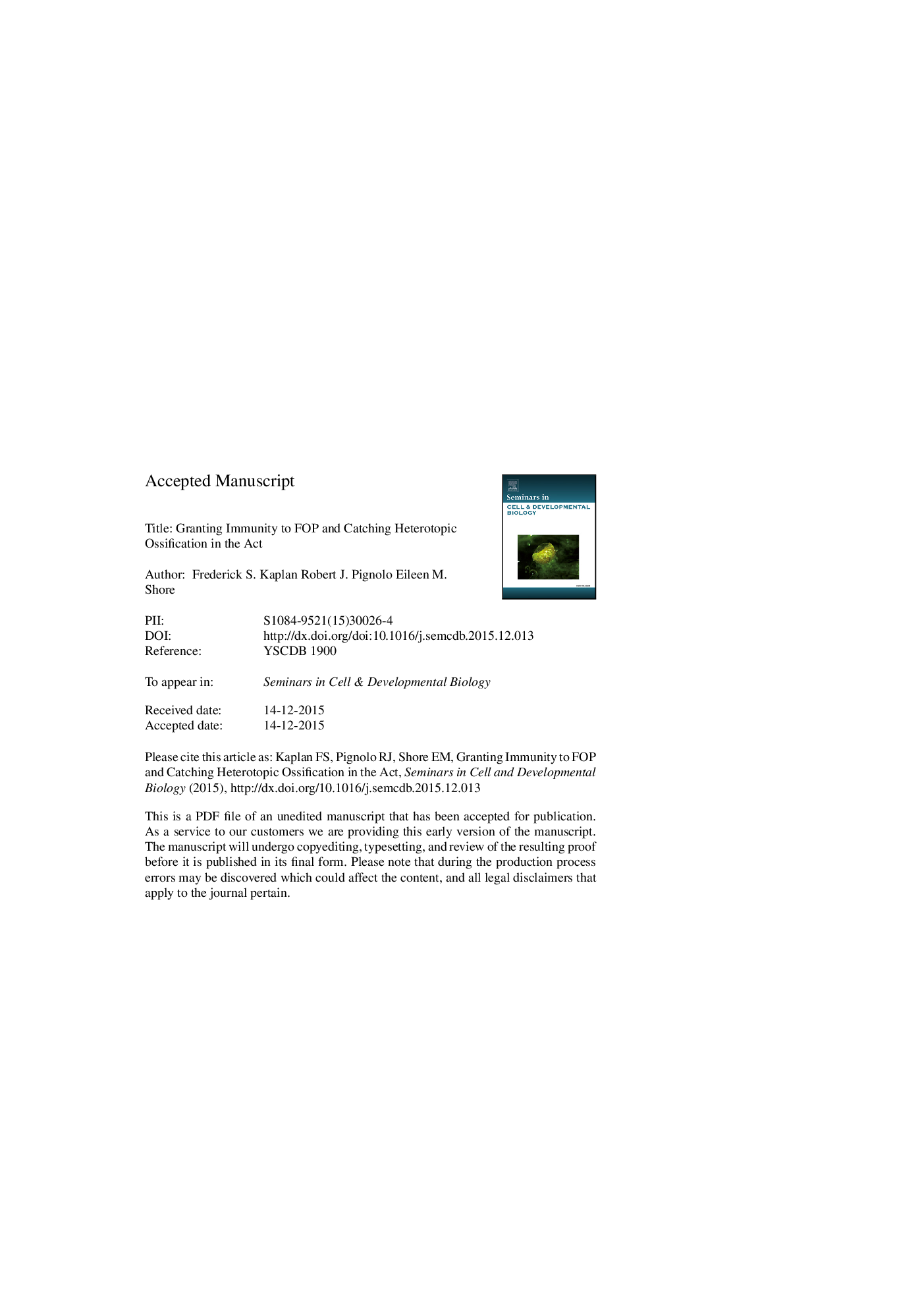| کد مقاله | کد نشریه | سال انتشار | مقاله انگلیسی | نسخه تمام متن |
|---|---|---|---|---|
| 8480224 | 1551374 | 2016 | 46 صفحه PDF | دانلود رایگان |
عنوان انگلیسی مقاله ISI
Granting immunity to FOP and catching heterotopic ossification in the Act
دانلود مقاله + سفارش ترجمه
دانلود مقاله ISI انگلیسی
رایگان برای ایرانیان
کلمات کلیدی
Activin AFibrodysplasia ossificans progressiva (FOP)ACVR1Heterotopic ossification - استخوان سازی نابجا، هتروتوپیک اسیفیکیشنInnate immune system - سیستم ایمنی بدن انسانBone morphogenetic protein signaling - سیگنالینگ پروتئین مورفوژنیک استخوانbone morphogenetic protein (BMP) - پروتئین مورفوژنیک استخوان (BMP)Toll-like receptor (TLR) - گیرنده سفارشی (TLR)
موضوعات مرتبط
علوم زیستی و بیوفناوری
بیوشیمی، ژنتیک و زیست شناسی مولکولی
بیولوژی سلول
پیش نمایش صفحه اول مقاله

چکیده انگلیسی
The progressive transformation of one organ system into another is a fundamental signature of fibrodysplasia ossificans progressiva (FOP), the most catastrophic form of extraskeletal bone formation in humans. In all affected individuals, FOP is caused by heterozygous missense gain-of-function mutations in Activin receptor A type I (ACVR1), a bone morphogenetic protein (BMP) type I receptor. Loss of autoinhibition of the mutant receptor (mACVR1) results in dysregulated BMP pathway signaling, and is necessary for the myriad developmental features of FOP, but does not appear sufficient to induce the episodic flare-ups that lead to disabling post-natal heterotopic endochondral ossification (HEO) and that are a hallmark of the disease. Post-natal FOP flare-ups strongly implicate an underlying immunological trigger involving inflammation and the innate immune system. Recent studies implicate canonical and non-canonical TGFβ/BMP family ligands in the amplification of mACVR1 signaling leading to the formation of FOP lesions and resultant HEO. BMP and Activin ligands that stimulate mACVR1 signaling also have critical regulatory functions in the immune system. Cross-talk between the morphogenetic and immunological pathways that regulate tissue maintenance and wound healing identifies potential robust therapeutic targets for FOP. Here we review current evidence for an immunological trigger for flare-ups and HEO in FOP, propose a working schema for the pathophysiology of observed phenomena, and highlight outstanding questions under investigation.
ناشر
Database: Elsevier - ScienceDirect (ساینس دایرکت)
Journal: Seminars in Cell & Developmental Biology - Volume 49, January 2016, Pages 30-36
Journal: Seminars in Cell & Developmental Biology - Volume 49, January 2016, Pages 30-36
نویسندگان
Frederick S. Kaplan, Robert J. Pignolo, Eileen M. Shore,